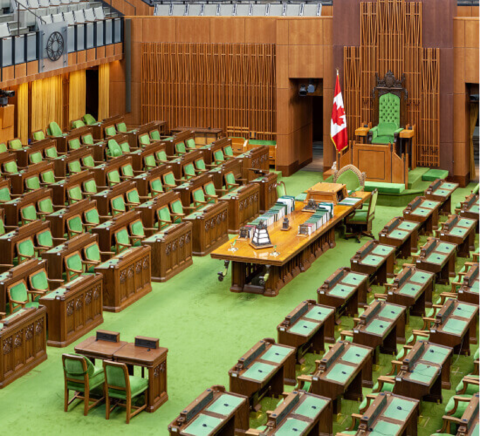
Budget 2023 contained a mix of good tax policies and some glaring omissions. Here’s our list of the positive and not-so-positive tax elements in the budget.
1. Good: Investments in healthcare, dental care, and a green economy
It was encouraging to see Budget 2023 put money into improving healthcare, particularly expanding Canada’s dental care program, which will help more lower-income individuals.
But the real spending in this year’s budget was on growing the country’s green economy. One positive aspect of the plan is a clean electricity tax credit. It is available to non-taxable entities like Crown corporations or other not-for-profit utilities.
Bad: No plan to make biggest polluters pay for the transition
The government’s investments come largely in the form of tax credits for industry. Government-led investment and leadership would do more to attract private sector dollars. Tax credits are subsidies and this means a great deal of public money will be going to very large and profitable corporations. These tax credits should be matched with accountability measures to ensure money is being spent as intended.
The federal government’s climate action plan also leaves the greatest contributors of climate change off the hook. The wealthiest 1% is responsible for nearly twice the emissions as the poorest 50%. By leaving tax loopholes for the rich wide open and failing to bring in any new taxes on large profitable corporations that have been propelling both climate change and inflation, Canada is effectively passing the bill for this spending onto average Canadians.
2. Good: A tax on dividends received by banks and financial institutions
In the way of new taxes, this was one bright spot in the budget. The tax on dividends for banks and financial institutions is expected to generate $3.15 billion over five years.
Bad: Not broad enough, not big enough
The revenue of this one tax is a mere fraction of the +$40 billion that Canada could generate each year if it were to close large tax loopholes for the wealthy, such as capital gains exclusion and big tax breaks for stock options, executive pay, and business meals/ entertainment.
3. Good: Better corporate ownership transparency
Budget 2023 recommitted the government’s plans to establish a public corporate registry of beneficial owners to tackle financial crime, something we have long advocated for with our partners Transparency International Canada and Publish What You Pay Canada. The budget also included plans to review and strengthen anti-money laundering legislation and create a financial crime agency in Canada.
Bad: Canada needs broader corporate financial transparency
While a public registry of beneficial owners will go a long way to combat tax dodging and money laundering, there is much more the government can do to improve corporate transparency in Canada. It can start by following the lead of Australia which already requires large corporations to report their tax and financial information. This summer, Australia will force multinationals –including those with foreign headquarters—to publish country-by-country tax information. The CRA already collects this information. The government needs to authorize public release in line with recommendations from the Global Reporting Initiative (GRI).
4. Good: A commitment (again) to automatic tax filing and a timeline
In their 2020 speech from the throne, the Liberals promised to explore automatic tax filing to help more vulnerable individuals get the benefits they need. We celebrated this announcement to help make our tax system more accessible but noted its absence in subsequent budgets. We’re encouraged to see in Budget 2023 that they are (finally) pursuing this.
Bad: Not big enough, bold enough, or fast enough.
We would like to see this timeline sped up, especially as life is getting more expensive and more benefits are being delivered through the tax system. During the pandemic, the government showed it can design and administer massive programs to get help to people in need. We should see that urgency and leadership again. We hope the CRA will continue to explore other pilots to get more marginalized individuals outside of banking and tax systems their benefits.
5. Mediocre: Alternative Minimum Tax Rate to target wealthy Canadians
The Alternative Minimum Tax Rate is intended to limit tax avoidance by the wealthiest Canadians. Budget 2023 plans to raise the alternative minimum tax rate from 15% to 20.5%. It is also raising the capital gains inclusion for the AMT from 80% to 100%.
Bad: More effective measures to target tax avoidance left out
It remains to be seen how effective this tax will be. BNN reports that individuals would be able to recover their minimum tax over a seven-year period. The estimated revenue is $3.0 billion, much less than the $26 billion that a wealth tax could generate.
If the government can raise the capital gains inclusion for the AMT, why not raise it for all capital gains taxation and generate more than $20 billion annually by closing this tax loophole. Similarly, if the government can raise the AMT rate for individuals, why not also for corporations? The U.S. introduced a minimum tax on corporations’ reported profits to tackle corporate tax dodging. Canada could’ve done the same in Budget 2023 but instead shied away from addressing the tens of billions lost to corporate tax avoidance.
6. Good: A grocery rebate to help some Canadians with higher food prices
Budget 2023 includes a one-time rebate for lower-income households. This will help some families struggling with the cost of inflation.
Bad: Not broad enough, leaves large corporations off the hook
While the rebate will help families under a certain income threshold, it is too narrow in scope to help many households that are having a hard time. This is a one-time support while food prices are likely to remain elevated for the foreseeable future. It also fails to address one of the main causes of inflation, which is soaring corporate profits. An excess profits tax would decrease corporations’ incentives to raise profit margins while generating enough revenue to provide broader relief to more households.
7. Good: Plans to draft legislation for the General Anti-Avoidance Rule (a.k.a. GAAR)
The Budget is proposing to draft legislation for GAAR – a law that will give the Canada Revenue Agency more power to hold wealthy individuals and corporations legally accountable for dodging taxes. The legislation will include a number of elements we’ve asked for to strengthen the CRA’s ability to enforce tax compliance.
Bad: Time is of the essence
The CRA needs more investigative and legal resources to combat tax avoidance. This should’ve been done years ago and it should be fast tracked.
